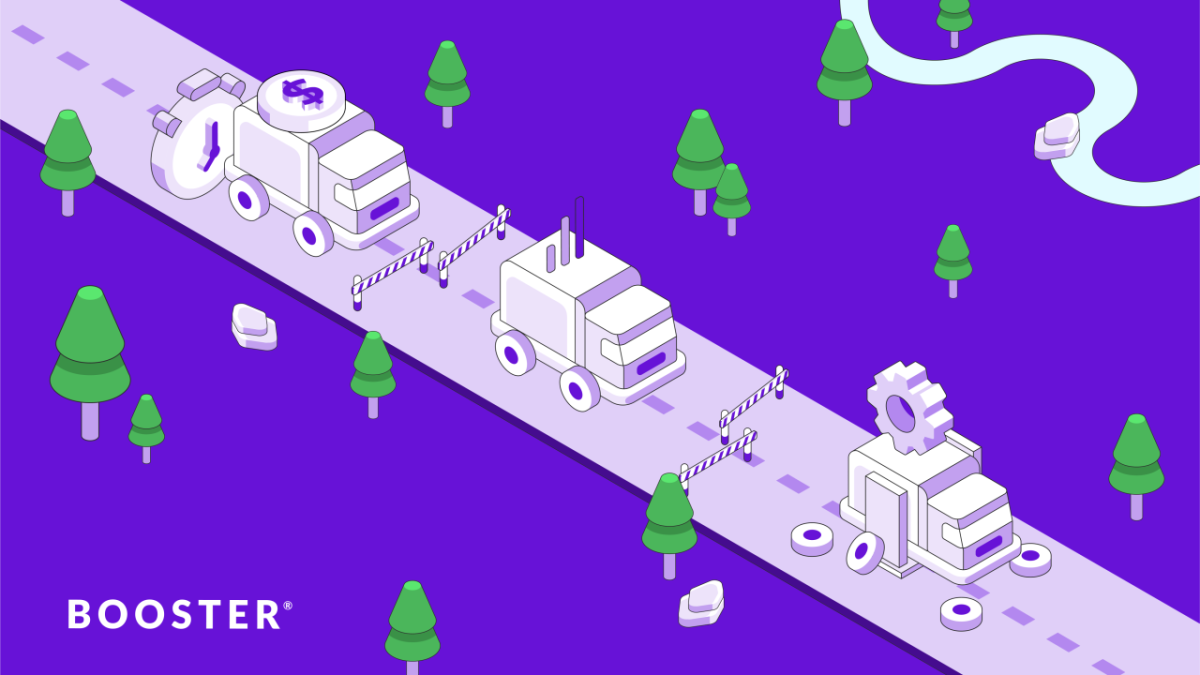How To Reduce Fleet Fuel Costs

Fleet management in 2023 is more complicated than ever, but one universal truth remains: fleet managers continue to search for cost savings wherever they can. They may not realize that cost savings can be hidden in plain sight — buried in the methods by which fleets source their fuel. In a recent article for Work Truck Magazine, CEO and Founder of Booster® Frank Mycroft explores how fuel costs span much more than just the price of each gallon.
“You’re likely spending much more on fueling than you realize,” writes Mycroft. “The time, fuel, and wear and tear associated with endless treks to and from the gas station add up quickly, adding significant stress to already tight budgets.”
Rethinking Fleet Fueling
Most fleets depend on gas stations when filling the tank, requiring drivers to take time out of their shifts to travel to the pump and fill up. As Mycroft points out in Work Truck Magazine, each trip to the gas station takes around 20 minutes, which equates to about 61 hours per year per driver. Not only is this a significant time burden, but it also adds up to $1,436 annually per vehicle in labor costs.
More hidden fuel costs lie in the fuel burned traveling to and from the station. For vehicles that deviate from their planned service or delivery routes by adding gas station stops, traditional methods of fleet fueling may reduce efficiency.
Mycroft explains that vehicle wear and tear present another opportunity to save on fleet fueling. Each fleet vehicle can expect around $160 in depreciation on average annually due to fueling errands alone. Extra miles also require more vehicle maintenance, affecting fuel economy.
Implementing a Fleet Fuel Management System
To avoid losing money to hidden fleet fuel costs, fleet owners should consider implementing a fleet fuel management system like mobile fuel delivery by Booster. In this model, fleet vehicles are fueled on-site in one session during fleet off-hours. This way, drivers begin each shift with the fuel they need, and the labor costs that would have gone toward fueling at the gas station can be redirected toward more productive tasks.
Mobile fuel delivery also eliminates the extraneous fuel burn and wear and tear associated with gas station errands. To enhance holistic fleet management, the service includes a fleet portal, which provides a glimpse into fleet performance and fuel spend to help managers keep up with fleet maintenance and better understand their fleet fueling operation.
Reducing Fuel Costs for Fleets
Fleet managers wondering how to reduce fleet fuel costs should take the time to analyze and manage their fueling expenses by considering the hidden costs of labor, fuel burn, and wear and tear. By implementing a fleet fuel management system like Booster’s mobile fuel delivery service, fleets can realize significant cost savings over the long term.
As Mycroft writes in Work Truck Magazine, “Fleet managers looking to balance tight budgets amid rising fleet costs should implement telematics and data analytics, teach safe driving practices, and consider adopting mobile fuel delivery to streamline fueling and save on costs.”

